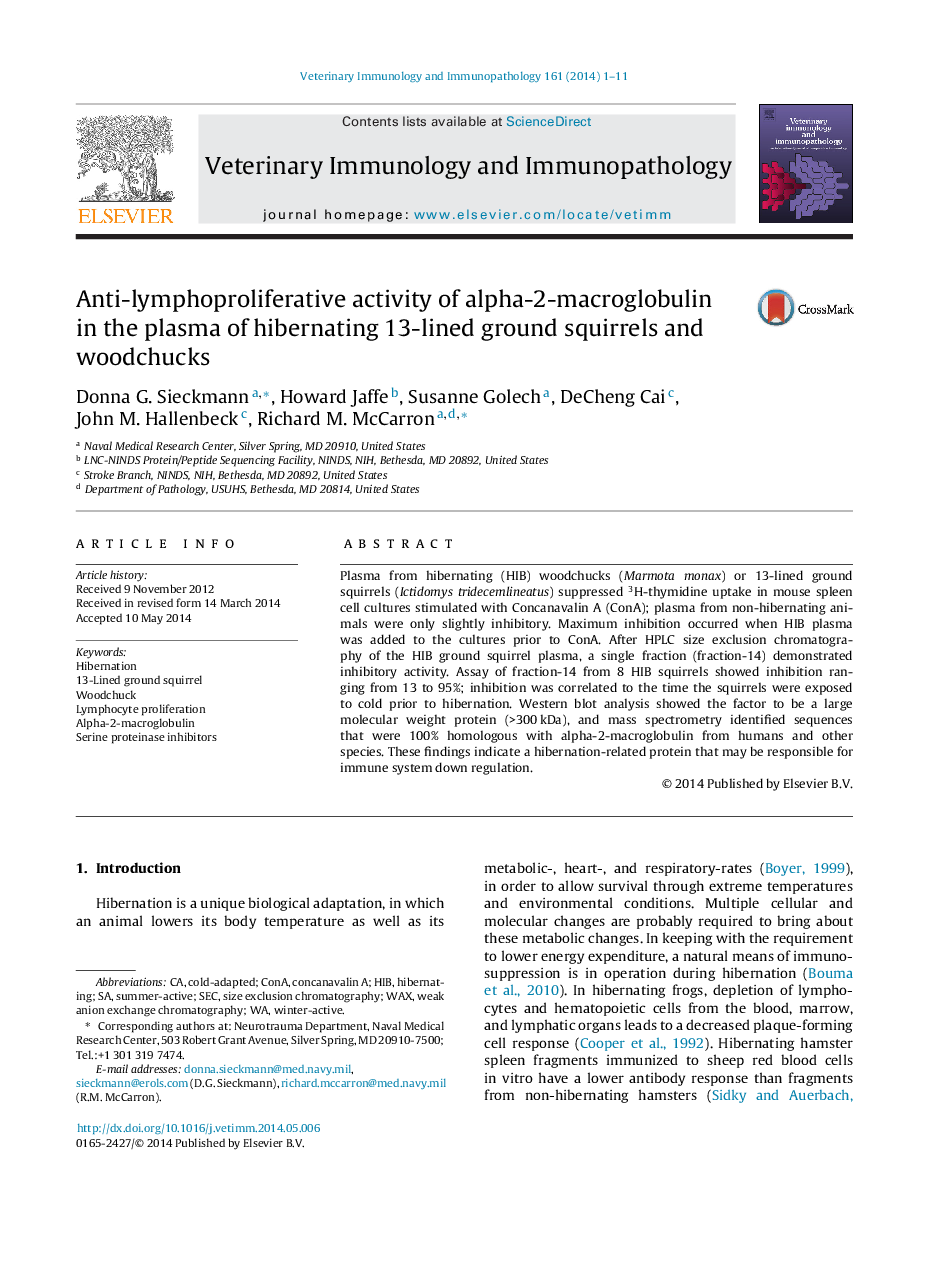| Article ID | Journal | Published Year | Pages | File Type |
|---|---|---|---|---|
| 5796718 | Veterinary Immunology and Immunopathology | 2014 | 11 Pages |
â¢Hibernating ground squirrel plasma suppressed ConA induced proliferation.â¢Maximal suppression occurred when plasma was added prior to ConA.â¢The inhibitory factor was a large (>300 kDa) protein.â¢The inhibitory factor had sequence homology with human alpha-2-macroglobulin.
Plasma from hibernating (HIB) woodchucks (Marmota monax) or 13-lined ground squirrels (Ictidomys tridecemlineatus) suppressed 3H-thymidine uptake in mouse spleen cell cultures stimulated with Concanavalin A (ConA); plasma from non-hibernating animals were only slightly inhibitory. Maximum inhibition occurred when HIB plasma was added to the cultures prior to ConA. After HPLC size exclusion chromatography of the HIB ground squirrel plasma, a single fraction (fraction-14) demonstrated inhibitory activity. Assay of fraction-14 from 8 HIB squirrels showed inhibition ranging from 13 to 95%; inhibition was correlated to the time the squirrels were exposed to cold prior to hibernation. Western blot analysis showed the factor to be a large molecular weight protein (>300Â kDa), and mass spectrometry identified sequences that were 100% homologous with alpha-2-macroglobulin from humans and other species. These findings indicate a hibernation-related protein that may be responsible for immune system down regulation.
